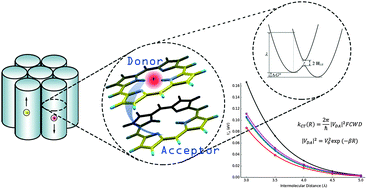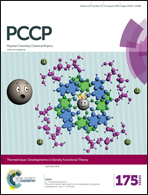Effect of metallation, substituents and inter/intra-molecular polarization on electronic couplings for hole transport in stacked porphyrin dyads†‡
Abstract
We carried out a systematic study of the hole transport properties for a series of symmetrically stacked porphyrin dimers. In the first part of this study, we evaluated the sensitivity of electronic couplings to orbital relaxation due to molecular ionization and intermolecular interactions for a series of halogenated porphyrins. The effect of polarization was estimated by comparing electronic couplings from fragment orbital density functional theory (FODFT) and frozen density embedding electron transfer (FDE-CT). For the dimers considered, the effect of polarization was estimated to be less than 20%, in line with previous studies on different molecular dimers. Thus, we decided to employ a computationally cheaper FODFT method to continue our study of the effect of metals and substituents on the electronic couplings for hole transfer. We find that, compared to the non-metallated porphyrins, Ni, Fe and Pt significantly reduce the coupling, while Zn, Ti, Cd and Pd increase it. The effect of substituents was studied on a series of meso-substituted porphyrins (meso-tetrapyridineporphyrin, meso-tetraphenylporphyrin and derivatives) for which we could relate a reduction of the coupling to steric effects that reduce the overlap between the frontier orbitals of the monomers.

- This article is part of the themed collection: Developments in Density Functional Theory

 Please wait while we load your content...
Please wait while we load your content...